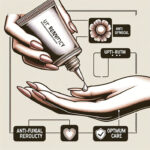Natural Home Remedies for Onychomycosis: What Really Works?

Natural Home Remedies for Onychomycosis: What Really Works?
Getting to Know Onychomycosis and Its Challenges
Let’s face it—onychomycosis, or nail fungus, isn’t just about appearances. It can really throw a wrench in your daily life by causing discomfort, embarrassment, and even making simple activities a pain. You might brush it off as a minor blemish at first, but as it settles in, it can turn into a genuine nuisance. In this guide, we’re diving into both the physical hurdles and the emotional toll this condition can take, while also exploring why more and more folks are turning to natural, holistic solutions.
The story of onychomycosis starts with understanding how it affects you on multiple levels. Sure, your nails might not look their best, but the infection can also lead to discomfort and even pave the way for secondary issues. Knowing these challenges is key if you’re weighing your treatment options, especially when traditional methods don’t hit the mark. So, we’re here to shine a light on natural home remedies that blend modern insights with tried-and-true traditional wisdom.
What Exactly is Onychomycosis and What Are the Signs?
In simple terms, onychomycosis is a fungal infection messing with your nails—causing them to change color, become thicker, and even crumble in some cases. At first, you might mistake these early symptoms for a minor injury or nail damage. But before you know it, your nails might show off shades of yellow, white, or brown, looking far from their usual self. Besides just being an eyesore, these changes might indicate underlying health and hygiene issues.
Everyone’s experience is different—some people just get a little discomfort, while others deal with significant pain and sensitivity. In more severe scenarios, the infection can lead to nails separating from the nail bed, which makes everyday walking or exercise a real challenge. Spotting these early signs is crucial since getting ahead of it can slow the fungus down and help dodge further complications.
Causes and Risk Factors You Should Know
There are plenty of reasons why nail fungus can take hold. One of the main culprits is dermatophytes, a type of fungus that loves warm, damp spots. That’s why people who are often in humid conditions—like athletes or those frequenting communal showers—are more at risk. Add in factors such as aging, a weakened immune system, or a family history of fungal issues, and you’ve got a recipe for trouble. Understanding these risks is the first step in both staving off and managing the infection.
It doesn’t help when other conditions, like diabetes or poor circulation, come into play—making your nails even more inviting for these fungi. Poor foot care habits or wearing shoes that trap moisture can also open the door for infection. By recognizing these factors, you can take proactive steps to lower your risk and effectively manage the condition through natural remedies and simple lifestyle tweaks.
The Broader Impact on Health and Confidence
Beyond the cosmetic aspect, nail fungus can seriously dent your overall health and self-esteem. Many people feel self-conscious about the way their nails look, leading to social withdrawal and skipping out on activities. Sometimes, what seems like a slow deterioration of your nails might actually signal bigger health issues, prompting further medical checks. This blend of physical discomfort and mental strain means that a holistic, patient-first approach often works best.
And let’s not forget that a fungal nail infection might just be the tip of the iceberg when it comes to broader health problems like skin infections or immune issues. That’s why turning to natural remedies isn’t just about getting rid of the fungus—it’s also about supporting overall wellness. By incorporating these remedies into your daily routine, you’re not only fighting the infection but also building a stronger, healthier body from the ground up.
Why Conventional Treatments Sometimes Fall Short
Many people have tried prescription meds or even laser therapy for onychomycosis, only to find that these fixes aren’t always permanent. The challenge? These conventional methods struggle to reach the fungus hiding deep within your nail, so even when things look better on the surface, the problem can persist underneath. This has pushed a lot of folks to explore natural remedies that work in harmony with your body’s own healing capabilities.
Often, traditional treatments seem to tackle only the visible symptoms rather than rooting out the real issue. The fungus can hide beneath the nail layers, making it tough for medications to truly reach it. With the need for long-term or repeated treatments—plus the inconvenience and cost—it’s no wonder people are increasingly looking to natural, home-based solutions for more holistic relief.
The Pitfalls of Prescription Medications
Sure, prescription antifungal medications can work, but they come with a bunch of challenges. They often require lengthy treatment periods that can span months, sometimes even years, and the infection can still return. One big issue is that these drugs sometimes fail to effectively penetrate the nail, and there’s always the looming threat of the fungus developing resistance. It’s like a never-ending cycle with no clear end in sight.
On top of that, these medications can interact badly with other conditions or medications, which means they’re not always a safe bet for everyone. The high costs and the need for regular liver function tests during treatment only add to the hassle. It’s no wonder many patients end up feeling frustrated with traditional therapies and start looking into natural alternatives that promise a gentler, more sustainable approach.
Side Effects and the Threat of Resistance
One of the biggest red flags with conventional antifungal treatments is the risk of side effects. Many of these drugs can cause everything from stomach issues to serious liver problems. Plus, there’s increasing concern over fungal strains becoming resistant to these medications, making recurring treatments less effective over time. Naturally, people start wondering if synthetic drugs are really the best option.
Given these risks, it’s no surprise that more individuals are leaning towards natural remedies. They tend to minimize side effects while providing a gentler yet effective way to fight the infection. The push towards holistic, natural approaches fits right in with today’s focus on prevention and long-term wellness rather than quick fixes.
Embracing Natural Home Remedies for Onychomycosis
In recent years, there’s been a noticeable shift as more people explore natural home remedies to combat nail fungus. This trend isn’t just about rejecting conventional treatments—it’s also about embracing a lifestyle that values holistic care. Many are now combining these remedies with smarter lifestyle choices to tackle nail fungus head-on, creating a more integrated and sustainable method of treatment.
What makes natural remedies so appealing is their multifaceted approach: they not only target the fungus but also ease inflammation and boost overall nail health. Unlike many synthetic treatments that focus solely on killing the fungus, natural solutions lend supportive care that can help prevent the infection from coming back. This growing interest has spurred experts in alternative medicine to develop protocols that are both safe and effective, perfectly in line with a lifestyle that values well-being over quick, temporary fixes.
The Rise of a Holistic Approach
Lately, holistic methods have really taken off in the fight against onychomycosis. Instead of treating the problem with a one-size-fits-all approach, these strategies look at the bigger picture—covering everything from your diet and stress levels to the overall environment of your body. Holistic practitioners strongly believe that nurturing your body from the inside out creates a natural defense against infections. Think healthier dietary choices, stress management techniques, and the use of natural topical remedies.
This comprehensive approach shows just how interconnected our bodies are. When one part of your system is off-kilter—whether it’s your immune support or nutrient absorption—the risk of nail fungus increases. Addressing these underlying factors with a holistic strategy not only helps clear up the infection but also restores overall balance, paving the way for long-lasting health improvements.
Natural vs. Synthetic: Why the Natural Route Wins
One major perk of opting for natural remedies is how in tune they are with your body’s own processes. When used properly, these remedies work in a gentle, synergistic way with your system, avoiding many of the harsh side effects common with synthetic medications. They tap into the antifungal, anti-inflammatory, and antimicrobial powers of plants and natural extracts, offering a more well-rounded healing process.
Plus, natural remedies often come with a much lighter price tag—and fewer risks of adverse reactions. They’re easy to find and can be seamlessly added into your daily routine. With many of these methods having been used for centuries, you can take heart in the fact that tradition backs their efficacy. It’s like getting the best of both worlds: powerful, time-tested methods that work without the heavy drawbacks.
Top Natural Remedies for Onychomycosis
As we continue the search for effective treatments, several natural remedies have really made a name for themselves. Today, we’re spotlighting three favorites: tea tree oil, apple cider vinegar, and garlic extract. Each of these brings something unique to the table, offering different ways to tackle fungal infections. While they’re not magic potions, these remedies have shown promise in cutting down fungal growth, calming inflammation, and supporting healthier nails overall.
The choice of these remedies is backed by both user experiences and some solid clinical research that highlights their antifungal abilities. Just remember, consistency is key when it comes to natural treatments—pairing these remedies with proper nail care and a few lifestyle adjustments can make a world of difference over time.
Tea Tree Oil: How to Use It and Why It Works
Tea tree oil clearly stands out in the natural remedy lineup for onychomycosis, thanks to its strong antifungal punch. Extracted from the leaves of the Melaleuca alternifolia tree, it’s been used for ages as a natural antiseptic and fighter against fungi. A popular way to use it is to mix a few drops with a carrier oil like coconut or olive oil, and then massage it right into the affected nails. With regular application, many users report a noticeable drop in fungal presence.
While tea tree oil is generally safe and effective, a quick patch test is a smart idea since some people might experience mild irritation. Its versatility and long-standing reputation make it a solid first line of defense against stubborn nail fungus.
Apple Cider Vinegar: How Much to Use and What to Expect
Another go-to remedy is apple cider vinegar, which many swear by for its pH-balancing power. By mixing it with water, you can create a foot soak that not only reduces inflammation but also boosts circulation around the infected area. The natural acids in apple cider vinegar work to break down the fungal cell walls, effectively putting the brakes on the infection.
A common recipe is one part vinegar to two parts water, with a soaking time of about 15 to 20 minutes a day. Stick with this routine, and you might just see your nail’s texture and appearance gradually improving, all while keeping the fungus in check. It’s a simple, natural way to add an extra layer of defense.
Garlic Extract: How to Prepare It and Its Perks
Garlic isn’t just a kitchen staple—it’s also known for its potent natural antifungal properties, thanks largely to an active compound called allicin. To whip up your own garlic extract for nail care, try crushing a few cloves and mixing them with a carrier oil. This concoction can then be dabbed onto the affected nails, delivering a natural burst of antifungal action.
Regular use of garlic extract, along with good hygiene practices, might just help your nails bounce back over time. Sure, the smell can be strong, but its benefits in reducing fungal growth and boosting circulation are hard to beat. Just do a quick test patch first to make sure you’re not allergic, and monitor your progress as you go.
Lifestyle and Dietary Tweaks to Manage Onychomycosis
Tackling onychomycosis isn’t just about what you apply on your nails—it’s also about how you take care of your whole self. A balanced diet loaded with vital vitamins and minerals can give your immune system a boost, making it harder for fungal infections to take hold. On top of that, paying attention to your personal hygiene and overall environment is crucial.
Simple lifestyle changes can really speed up your recovery. For instance, keeping your feet clean, avoiding shoes that trap moisture, and managing stress are all key to strengthening your body’s natural defenses. When you combine these smart habits with natural remedies, you create an environment where your nails have the best chance to heal naturally.
Nutrients That Keep Your Nails Strong
Your nails need the right nutrients to stay healthy, and certain vitamins and minerals are like little superheroes for nail strength. Think biotin, vitamin E, and zinc—each plays a crucial role in promoting robust, resilient nails. Biotin, in particular, supports keratin production, which is essential for healthy nail structure. Loading up on leafy greens, nuts, and whole grains can really help keep your nails in top shape.
Omega-3 fatty acids, found in fish and flaxseed, are also great for cutting down inflammation around infected nails. By planning your meals around these health-boosting nutrients, you not only support overall wellness but also build a stronger barrier against fungal invaders.
Foods to Embrace and Those to Avoid
When it comes to beating onychomycosis naturally, what you eat matters a lot. It’s a smart move to steer clear of foods that give fungus a free ride—think processed sugars and refined carbs, which can act as fuel for fungal growth. Instead, focus on whole foods like fresh vegetables, lean proteins, and fermented goodies that help keep your body’s internal environment less friendly to fungus.
Incorporate foods like garlic and coconut oil, which not only nourish you but also double up as natural antifungals. A balanced, anti-inflammatory diet doesn’t just help knock out nail fungus—it supports your overall health, empowering your body to heal from the inside out.
The Science Behind Natural Remedies for Nail Fungus
While a lot of praise for natural remedies has come from anecdotal evidence, scientific studies are beginning to back them up too. Early clinical trials have started to reveal just how effective ingredients like tea tree oil and garlic extract can be in reducing fungal colonies and encouraging healthier nails. Researchers are still digging into the details, but the signs are promising.
Although the scientific evidence isn’t as robust as that for conventional treatments just yet, these encouraging results have helped pave the way for a more integrative approach. People are increasingly open to blending natural remedies with traditional methods, offering a balanced, research-backed strategy that taps into both worlds.





